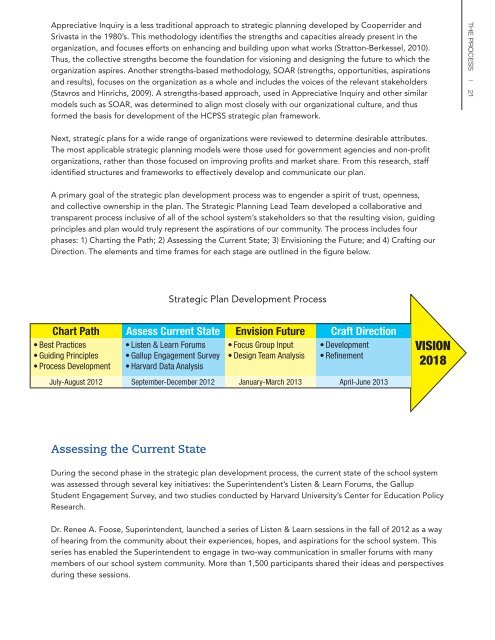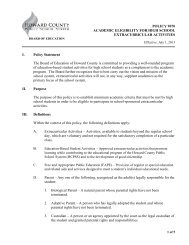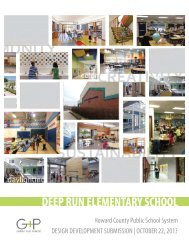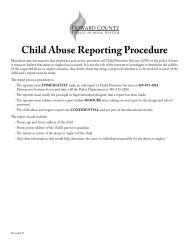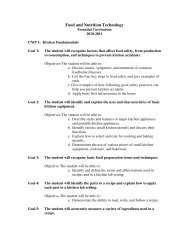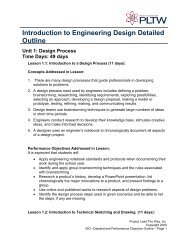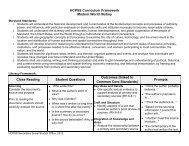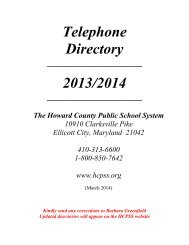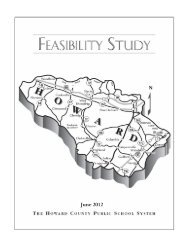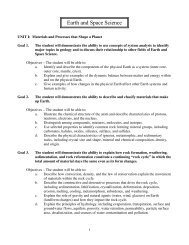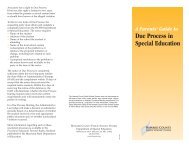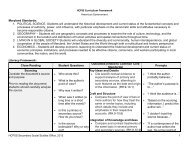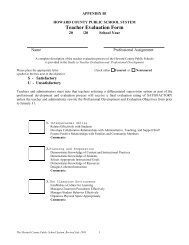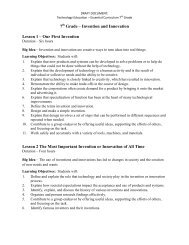VISION 2018 - Howard County Public Schools
VISION 2018 - Howard County Public Schools
VISION 2018 - Howard County Public Schools
You also want an ePaper? Increase the reach of your titles
YUMPU automatically turns print PDFs into web optimized ePapers that Google loves.
Appreciative Inquiry is a less traditional approach to strategic planning developed by Cooperrider andSrivasta in the 1980’s. This methodology identifies the strengths and capacities already present in theorganization, and focuses efforts on enhancing and building upon what works (Stratton-Berkessel, 2010).Thus, the collective strengths become the foundation for visioning and designing the future to which theorganization aspires. Another strengths-based methodology, SOAR (strengths, opportunities, aspirationsand results), focuses on the organization as a whole and includes the voices of the relevant stakeholders(Stavros and Hinrichs, 2009). A strengths-based approach, used in Appreciative Inquiry and other similarmodels such as SOAR, was determined to align most closely with our organizational culture, and thusformed the basis for development of the HCPSS strategic plan framework.The process I 21Next, strategic plans for a wide range of organizations were reviewed to determine desirable attributes.The most applicable strategic planning models were those used for government agencies and non-profitorganizations, rather than those focused on improving profits and market share. From this research, staffidentified structures and frameworks to effectively develop and communicate our plan.A primary goal of the strategic plan development process was to engender a spirit of trust, openness,and collective ownership in the plan. The Strategic Planning Lead Team developed a collaborative andtransparent process inclusive of all of the school system’s stakeholders so that the resulting vision, guidingprinciples and plan would truly represent the aspirations of our community. The process includes fourphases: 1) Charting the Path; 2) Assessing the Current State; 3) Envisioning the Future; and 4) Crafting ourDirection. The elements and time frames for each stage are outlined in the figure below.Strategic Plan Development ProcessChart Path Assess Current State Envision Future Craft Direction• Best Practices• Guiding Principles• Process Development• Listen & Learn Forums• Gallup Engagement Survey• Harvard Data Analysis• Focus Group Input• Design Team Analysis• Development• RefinementJuly-August 2012 September-December 2012 January-March 2013 April-June 2013<strong>VISION</strong><strong>2018</strong>Assessing the Current StateDuring the second phase in the strategic plan development process, the current state of the school systemwas assessed through several key initiatives: the Superintendent’s Listen & Learn Forums, the GallupStudent Engagement Survey, and two studies conducted by Harvard University’s Center for Education PolicyResearch.Dr. Renee A. Foose, Superintendent, launched a series of Listen & Learn sessions in the fall of 2012 as a wayof hearing from the community about their experiences, hopes, and aspirations for the school system. Thisseries has enabled the Superintendent to engage in two-way communication in smaller forums with manymembers of our school system community. More than 1,500 participants shared their ideas and perspectivesduring these sessions.


